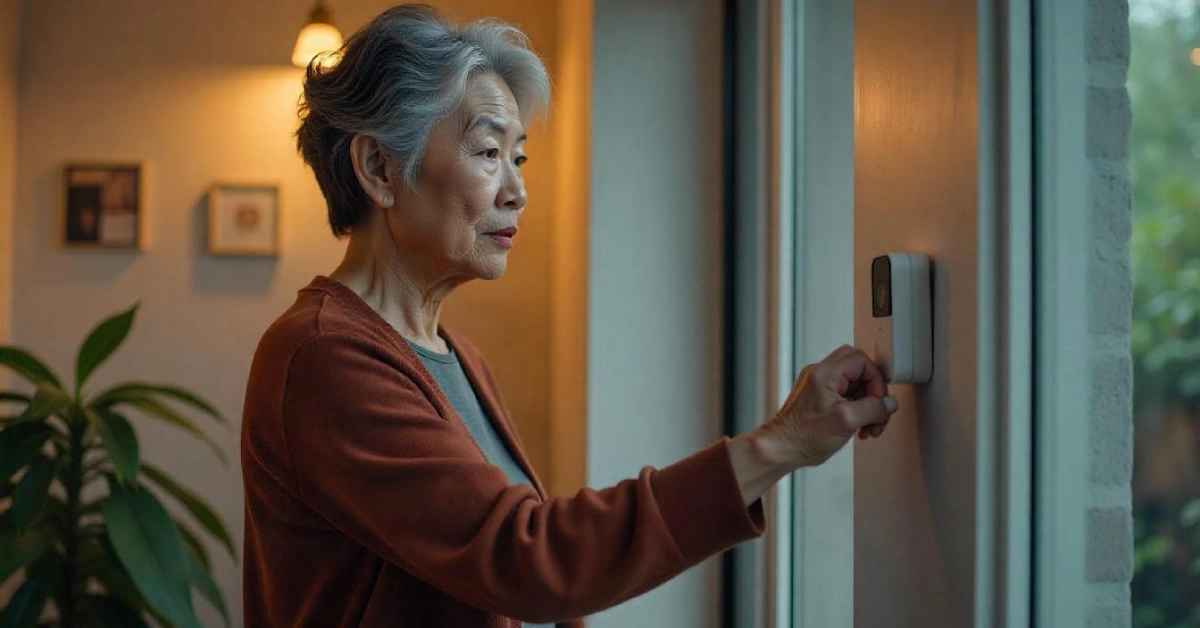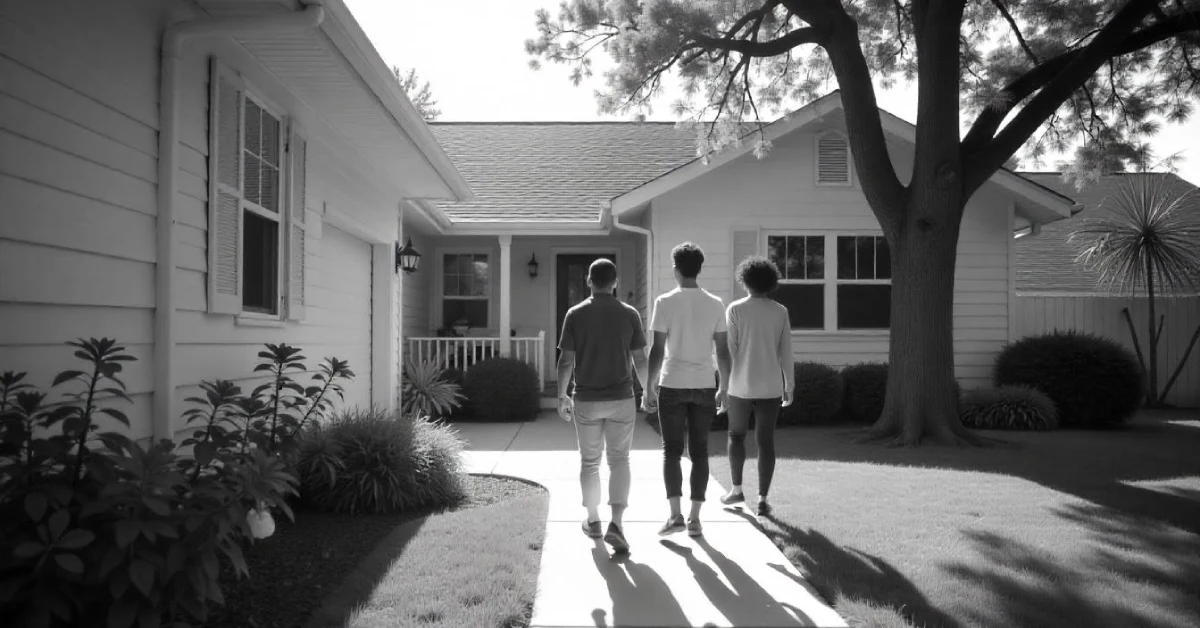Your home should be your sanctuary, not a source of worry about potential dangers lurking around every corner. Whether you’re a new homeowner figuring out the basics or a parent wanting to childproof everything, these home safety improvement tips will help you create a secure environment without breaking the bank.
Let’s dive into practical solutions that make a real difference in protecting your family and property.
Smart Security Systems That Don’t Require a PhD
Modern security technology has become surprisingly accessible, and you don’t need to be a tech wizard to benefit from it. Smart home devices now reduce burglaries by 12% compared to traditional setups, making this investment worthwhile for most families.

Start with a basic video doorbell system that connects to your smartphone via Wi-Fi. These devices let you see who’s at your door even when you’re not home, and many models include motion detection features. Basic doorbell cameras offer cloud storage and two-way communication without monthly fees.
Motion-activated cameras work best when placed at entry points like front doors, back patios, and garage entrances. Look for models with night vision capabilities and weather-resistant designs if you’re installing them outdoors. High-definition recording ensures you can actually identify faces in footage, which proves crucial if incidents occur.
Smart entry sensors provide real-time notifications when doors or windows open unexpectedly. These small devices attach easily to door frames and integrate seamlessly with smartphone apps, creating comprehensive monitoring without professional installation costs.
Consider upgrading to smart locks with advanced features like temporary access codes for service providers. Modern smart locks generate disposable access codes, letting you grant limited access without compromising long-term security or handing out physical keys.
Fire Prevention Strategies That Save Lives
Fire safety remains one of the most critical aspects of home safety improvement tips, especially considering that over 1,000 accidental electrical fires involving appliances occur annually. These statistics represent multiple fires every single day, making prevention absolutely essential for every household.
Install smoke detectors in every hallway and living area, testing them monthly and replacing batteries annually. Carbon monoxide detectors belong near sleeping areas and any fuel-burning appliances, as this deadly gas often accompanies fire incidents and presents invisible dangers.
Keep portable fire extinguishers in kitchens, garages, and other fire-prone areas, learning the PASS method beforehand. Pull the pin, aim at the fire’s base, squeeze the handle, and sweep from side to side during emergencies.
Never leave washing machines, tumble dryers, or dishwashers running overnight or when you’re away from home. Regular cleaning of tumble dryer filters removes lint buildup that can easily ignite and spread flames rapidly throughout your property.
Register all major appliances online with their manufacturers to receive automatic notifications about safety recalls. This simple step prevents incidents before they occur and represents a proactive approach to electrical safety management that costs nothing.
DIY Safety Improvements Anyone Can Handle
You don’t need professional installation for many effective home safety improvement tips that significantly improve your family’s protection. Over half of homeowners completed renovations in the last two years, making DIY safety upgrades increasingly popular and accessible.
Start with proper lighting throughout your home, particularly in stairways, hallways, and outdoor pathways where falls commonly occur. Motion-activated LED lights provide automatic illumination without ongoing electricity costs, and battery-powered options work well in areas without existing wiring.

Install grab bars in bathrooms near toilets and inside shower areas, choosing models rated for actual body weight rather than decorative options. These simple additions prevent serious injuries, especially for elderly family members or anyone with mobility concerns.
Secure heavy furniture and appliances to walls using appropriate anchoring systems, particularly in homes with small children. Televisions, bookcases, and dressers can tip over unexpectedly, causing devastating injuries that are completely preventable with proper mounting hardware.
Check and replace worn electrical cords before they become fire hazards, looking for fraying, exposed wires, or damaged plugs. Extension cords should never be used as permanent solutions, and overloaded outlets create dangerous conditions that can ignite surrounding materials.
Consider exploring additional home improvement ideas that enhance both safety and aesthetics, creating comprehensive upgrades that serve multiple purposes throughout your living space.
Weather-Proofing Your Home Against Extreme Conditions
Extreme weather events have become increasingly frequent, making weather preparedness essential for comprehensive home safety improvement tips that protect against multiple environmental threats. Power outages during severe weather can range from hours to several days, creating life-threatening situations without proper preparation.
Install a portable generator with proper outdoor ventilation to maintain power for essential appliances during outages. Refrigerators, medical equipment, and security systems require continuous power, and generators provide reliable backup when grid power fails during storms.
Sump pumps with battery backup capabilities protect basements in flood-prone areas, providing drainage solutions even during power outages. Battery backup ensures system operation when severe weather events commonly cause electrical failures, preventing extensive water damage.
Secure outdoor furniture, decorations, and other loose items that become dangerous projectiles during high winds. Even small items can cause significant property damage or personal injury when propelled by storm-force winds.
Trim tree branches that hang over your roof or power lines before storm season arrives each year. Falling branches cause extensive damage to roofing systems and can create dangerous electrical hazards that threaten your family’s safety.
For homes in areas prone to severe weather, consider creative protective solutions like stunning garage door decorations that also serve as storm reinforcement, combining aesthetic appeal with functional protection.
Smart Technology Safety Considerations
While smart home devices offer convenience and security benefits, they also introduce new vulnerabilities that require careful management. Recent research highlights potential safety dangers associated with IoT devices that can be exploited by malicious actors or malfunction unexpectedly.
Update device firmware regularly and change default passwords immediately after installation, using strong passwords that combine letters, numbers, and symbols. Many security breaches occur because users never change manufacturer default settings that are widely known.
Install devices from reputable manufacturers with established security protocols rather than choosing the cheapest options available. Quality devices receive regular security updates and provide better protection against cyber attacks that could compromise your home’s safety.
Maintain traditional backup systems alongside smart technology to ensure continued protection if devices fail or lose connectivity. Smart thermostats, locks, and security systems should never be your only line of defense against potential threats.
Monitor your network for unusual activity and consider separating IoT devices on a guest network to limit potential damage. Professional installation services provide 24/7 monitoring with rapid response times, offering comprehensive oversight that individual homeowners cannot match.
Creating Your Home Safety Action Plan
Implementing effective home safety improvement tips requires a systematic approach that prioritizes the most critical vulnerabilities first. Start by conducting a room-by-room safety assessment, identifying potential hazards and ranking them by risk level and implementation difficulty.
Create a family emergency plan that includes evacuation routes, meeting points, and communication procedures for different scenarios. Practice these plans regularly so everyone knows what to do during actual emergencies when stress levels are high.
Keep emergency supplies readily accessible, including flashlights, batteries, first aid kits, and bottled water for at least three days. Store these items in multiple locations throughout your home so they remain available regardless of which areas become inaccessible.
Document your home’s safety features and emergency procedures in writing, keeping copies in multiple locations including your car and workplace. This information helps emergency responders and ensures family members can access critical details when needed.
Review and update your safety measures annually, checking equipment functionality and replacing expired items like batteries and emergency food supplies. Home safety requires ongoing attention rather than one-time setup to remain effective over time.
Conclusion
These home safety improvement tips provide a solid foundation for protecting your family and property without requiring extensive technical knowledge or massive financial investment. Start with the basics like smoke detectors and secure locks, then gradually add smart technology and weather-proofing measures as your budget allows.
Remember that effective home safety combines proven traditional methods with carefully selected modern technology, supported by regular maintenance and family preparedness planning. The key lies in viewing safety as an integrated system rather than individual components, ensuring all elements work together seamlessly.
What safety improvements will you tackle first? Share your experiences and questions in the comments below to help other homeowners create safer living environments for their families.

